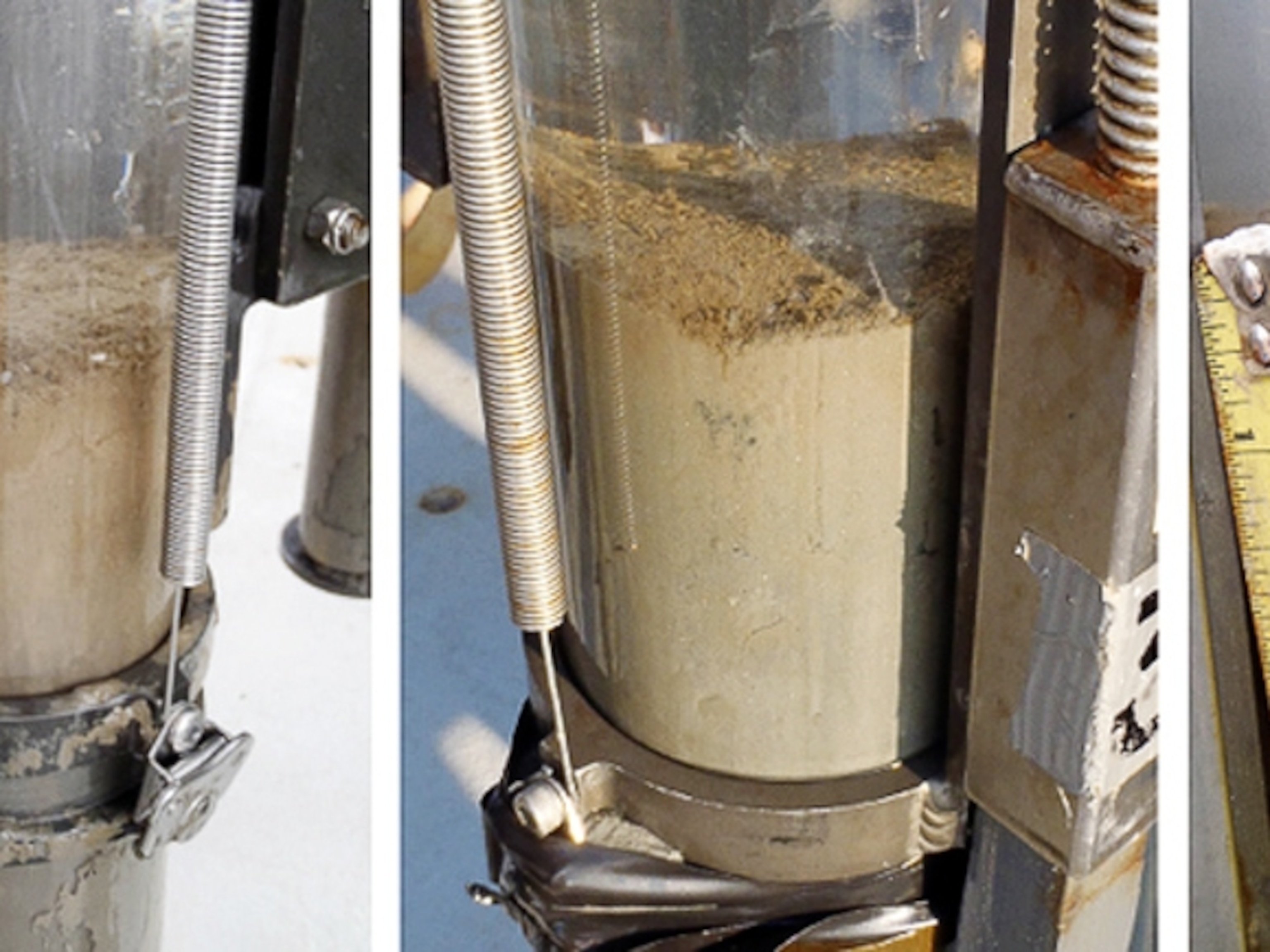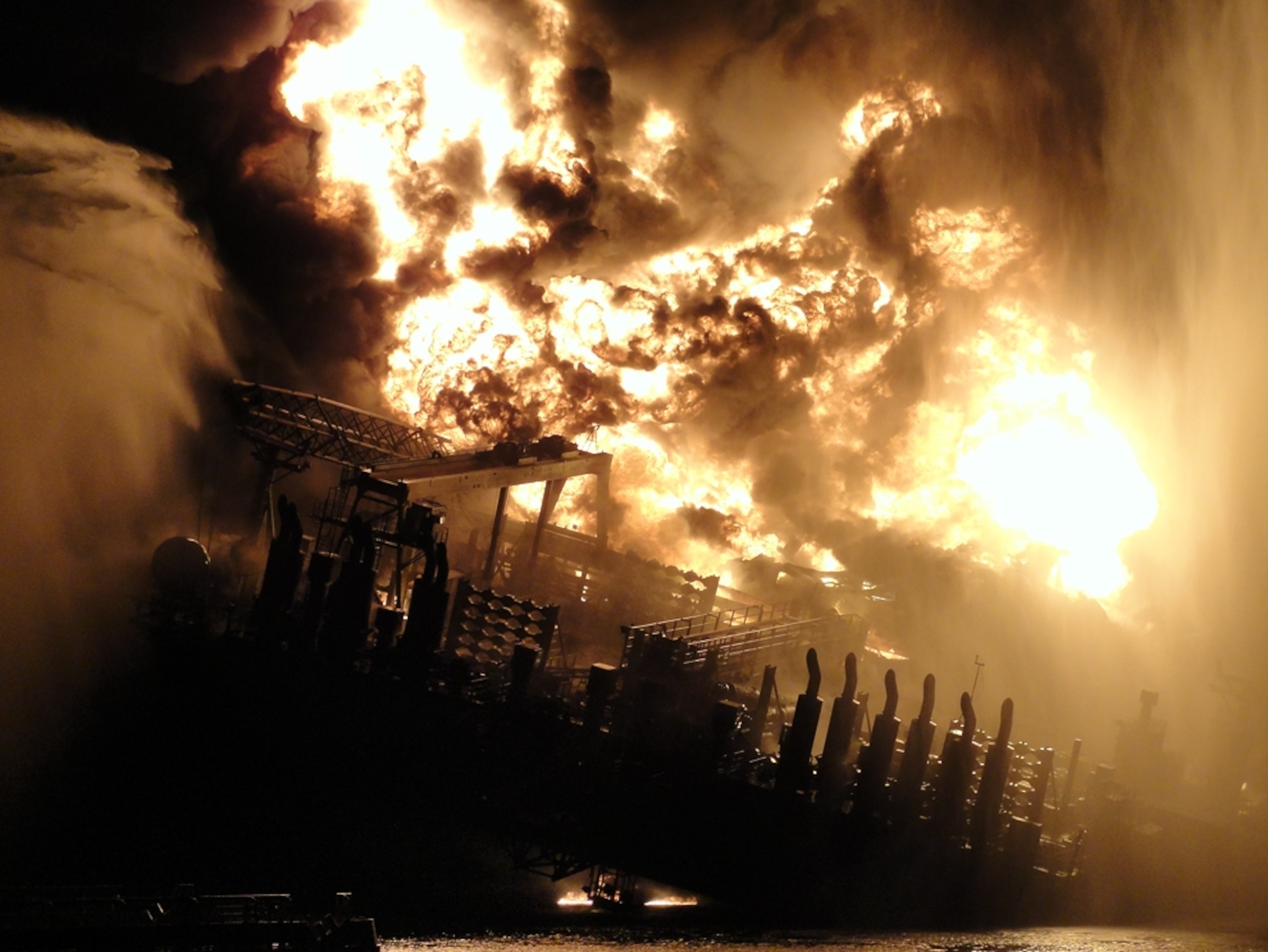
New Gulf Oil Seeps Tied to Another Well
Oil seeps detected near the Deepwater Horizon wellhead aren't natural, yet highlight difficulties in teasing out the cause of leaks in the oil-rich Gulf, experts say.
Part of an ongoing series on the environmental impacts of the Gulf oil spill.
Oil seeps detected near the Deepwater Horizon wellhead, the source of the Gulf of Mexico oil spill, are most likely related to another nearby well and are not an indication that BP's newly installed containment cap is unstable, U.S. officials said yesterday.
The announcement comes after days of debate over whether the seep was a sign that the cap might be forcing oil to escape elsewhere on the seafloor—or if it was simply a natural leak.
Although the recently detected seeps apparently aren't natural, they highlight the difficulties in separating the effects of the spill from the background flow of oil that has existed in the Gulf since before the Deepwater Horizon oil rig exploded and sank in April.
In the oil-rich Gulf (map), there's "nothing unusual" about natural seeps, said Tad Patzek, chair of the department of petroleum and geosystems engineering at the University of Texas, Austin. Natural seeps occur when oil—which is lighter than water—escapes into the water column from highly pressurized seafloor rock, Patzek said.
In fact, more than 1,300 barrels of oil a day seep naturally into the Gulf of Mexico, according to a 2002 report by the U.S. National Research Council of the National Academy of Sciences.
What makes the BP spill exceptional is that it accounts for a volume of oil that's unprecedented in the Gulf—even with natural seeps, noted Christopher Reddy, a marine chemist at the Woods Hole Oceanographic Institution in Massachusetts.
Imagine "thousands of little leaky faucets compared to a fire hydrant that is flying out," he said. "You need to put that in context."
3-D Surveys Reveal Gulf Oil Leaks
On July 15 the joint industry-federal response team announced that a new cap had fully sealed the oil gushing from the mile-deep (1.6 kilometer-deep) wellhead, the first time the flow had stopped since the Deepwater Horizon oil rig sank in late April. (See pictures: "New Cap Stops Gulf Oil Spill, BP Says.")
But a few days later the response-team leader, U.S. Coast Guard Admiral Thad Allen, reported the discovery of a seep "a distance from the well." At a Wednesday press briefing Allen added that bubbles had been discovered near the damaged Deepwater Horizon blowout preventer.
The blowout preventer has "been down there a long time under a lot of stress. And just like any other piece of equipment, we're starting to see some small leaks around it," Allen said of the bubbles.
Figuring out the nature of the roughly mile-deep (1.6-kilometer-deep) seep, meanwhile, presented a unique set of challenges.
For one, UT Austin's Patzek noted, there's a "somewhat confusing" phenomenon in the Gulf that occurs when warm water underneath the surface rises up and decomposes methane hydrates, gases usually trapped in ice in the seafloor. This creates gas bubbles that look just like oil seeps.
Gulf seeps are also difficult to monitor, due to their remote and deep locations.
"The only way to tell whether the seeps are natural or not is to run a 3-D seismic survey over an area surrounding the failed well," Patzek said.
The survey involves laying out an imaginary grid on the water's surface and towing a series of air guns and microphones to collect seismic data, which can reveal changes in acoustic signals caused by oil seepages, he said.
"In our science, nothing is clear-cut and on the table," Patzek added. "You can't go to something that is ... miles deep, take it in your hands, and disassemble it."
After the cap had been put in place, Allen's team sent a National Oceanic and Atmospheric Administration vessel to the site to do such surveys—revealing that the seep was occurring near another well.
Though the team's attention is focused on the Deepwater Horizon wellhead, that seep could also spell problems for the separate well, which is still unidentified.
"We do not like to have any seeps from a properly completed well, just like you do not want to have oil dripping from your engine and oil pan," Patzek said. "Any seep is bad and may be a harbinger of more serious problems to come."
Gulf Wellhead Oil Leaks Not Yet Cause for Concern
Based on the most recent review, officials don't think the leaks around the capped BP wellhead are cause for concern—yet.
The pressure at the wellhead as of Tuesday was a relatively stable 6,834 pounds per square inch (psi) (47 million pascals), but it continues to slide very slowly by about one to two pounds (6,900 to 13,800 pascals) an hour, according to the Coast Guard's Allen.
If the pressure drops to around 6,000 psi (41 million pascals), that may mean too much pressure has built up inside the well, forcing oil to leak through the surrounding sea floor, where the rock is very loose and unconsolidated.
"I would say the biggest indicator is the pressure," said David Rensink, incoming president of the American Association of Petroleum Geologists. "If the well is maintaining pressure and stable, whatever leaks [there are] appear to be small."
The Coast Guard's Allen said Wednesday that the wellhead is currently "following a chart or a pattern that would indicate that the well has integrity. But the low-pressure readings have created the dilemma whether or not we have a well-depletion issue or there is a leak down there."
The NOAA vessel will continue to send back seismic data, Allen said Tuesday.
If the seismic data later reveal a big leak near the wellhead, "that is a serious concern," UT Austin's Patzek said.
Bigger leaks may impact the response team's "static kill" plan to flood the well with mud and cap it with cement—a temporary plug until a relief well stanches the oil flow, hopefully for good.
That's because instead of going into the well, the mud would spread into the leaking open rock layer, Patzek said. A leak would also make it more difficult, but not impossible, to push mud all the way to the bottom of the well.








